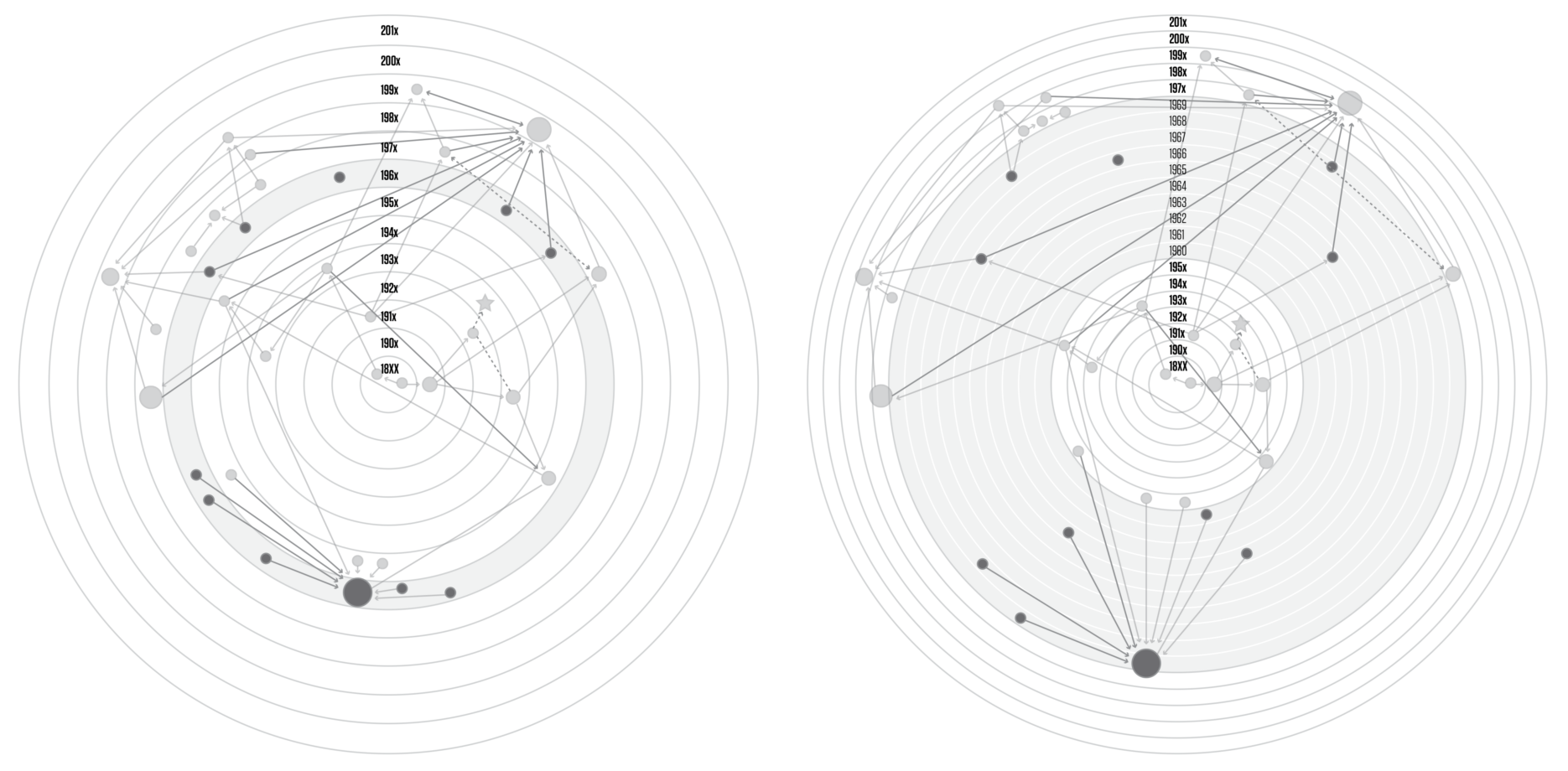Tracking the origin and mobilization of concepts across time and through different disciplinary fields is a key challenge in humanities and social sciences scholarship. For example, in this project a topic of interest has been the origin and mobilization of the phrase “visual literacy,” a trans-disciplinary concept that has garnered increasing attention in the wake of what Bolter (1991; 2001) has described as “the breakout of the visual” (p. 47 ff). Numerous scholars from different fields have advanced our understanding of “visual literacy” through the past 75 years, at times adopting different terminology to describe what is clearly a similar notion related to how humans make meaning of visual representations: visual grammar, visual rhetoric, visual literacy. In approaching the challenging task of mapping the knowledge networks that inform our understanding of this topic, it became clear that a graphical representation of relationships and patterns that could be displayed in terms of chronology, discipline or episteme, would be valuable, and thus the “Glass Cast Prototype” was conceptualized. In this paper we briefly discuss our tracing of the usage of “visual literacy” and related notions through time and across different knowledge domains, and then discuss our efforts to visualize the complex networks that emerged through the conceptualization of the Glass Cast Prototype.
The full text of this conference can be found here.

